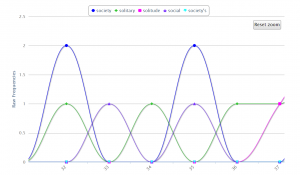While checking out the “Finding Whitman” DH project, I kept connecting the multiple projects and assignments with the basic foundations of literature circles.
In no way am I trying to unethically reduce the pedagogy behind this DH project, or similar ones. Rather, I am trying to build a schema from what pedagogy with existing tools makes DH projects so transformative.
I think the roots are in literature circles, at base level–a group with different roles and expectations (different DH projects and assignments) to create a well-rounded discussion and co-exploration of a text. After all, isn’t the point of meaningful pedagogical assignments and lessons supposed to start a conversation?
-
Frontispiece Project mirrors the Connector Role
Image Gloss and Material Culture Projects mirrors the Illustrator Role
Annotations Project mirrors the Passage Master/Literary Luminary Role
I also think that DH projects have the ability to take the basis of creating conversation and co-constructed understanding to the next level beyond the discussion that literature circles offer. DH projects, like this Whitman one for today, is also a resource, a platform for publishing, and is an easily adaptable, “live” space because it is open source.
Though this idea is innovative and breaks the classroom confinements and boundaries, there were mixed reviews from participants. I feel that maybe scaffolding toward such a DH project requires attention to the basics, pedagogically working from the ground-up to the WWW. Would modeling the co-constructivity in the classroom before dedicating to such a project (or similar project) help students appreciate and rely on interacting in a more meaningful way? In my mind, here’s the scaffold: Lit Circles (with modifications + additional activities)–>Class wiki/blog–>Class DH Project–>Inter-campus/location related DH Project. Would mastering these DH projects in the spaces and locations we are most comfortable in be a possible way of integrating a larger-scale project? Or, are the larger-scale and multiple locations just “too big” for “us” right now? What is the best approach? While we all have to operate on our own pedagogical praxis and comfortability levels, it would help to have some model based in theory to apply to praxis. I’m open for opinions on this. I think this is an important point to address, if we are ever to implement a DH project or tool that reaches each student in the most meaningful ways possible.
